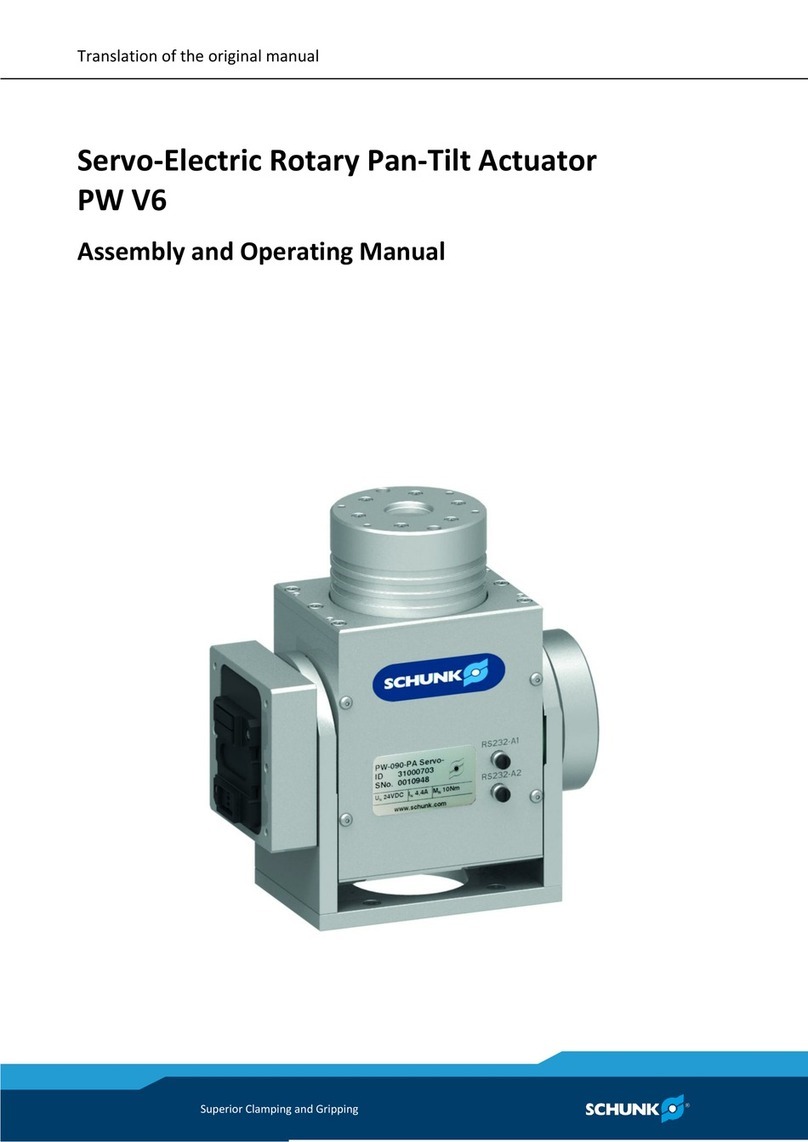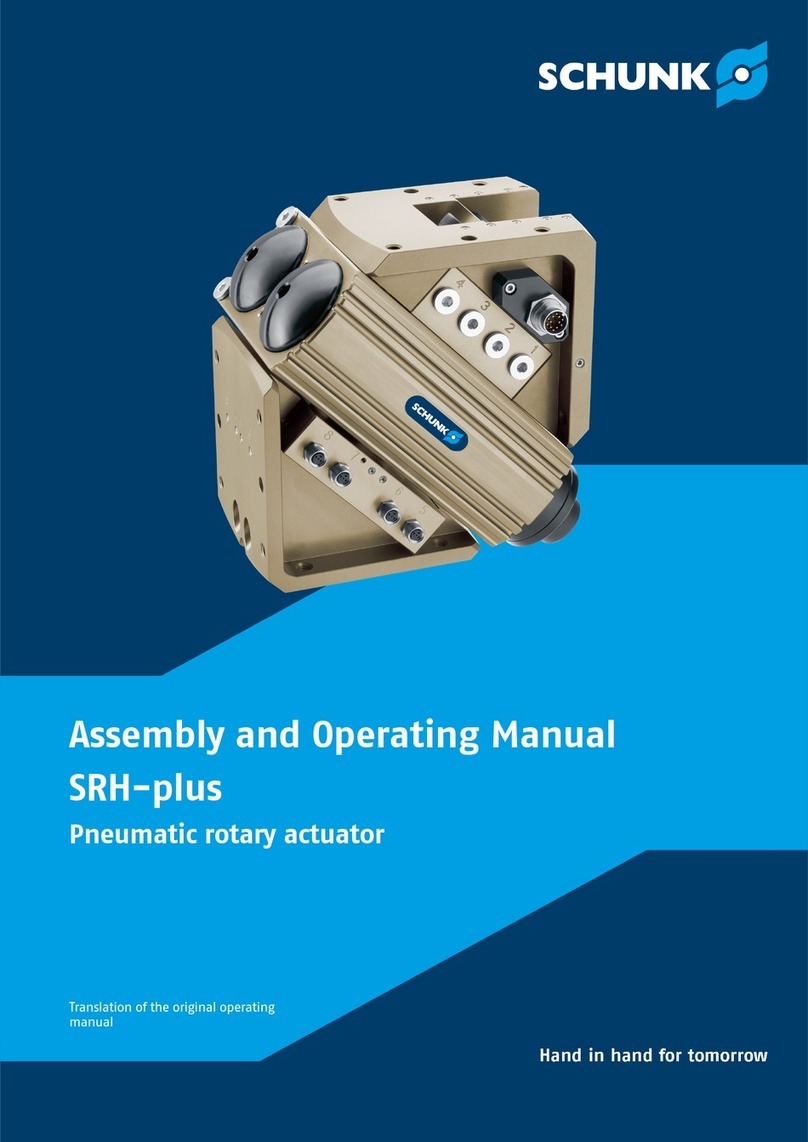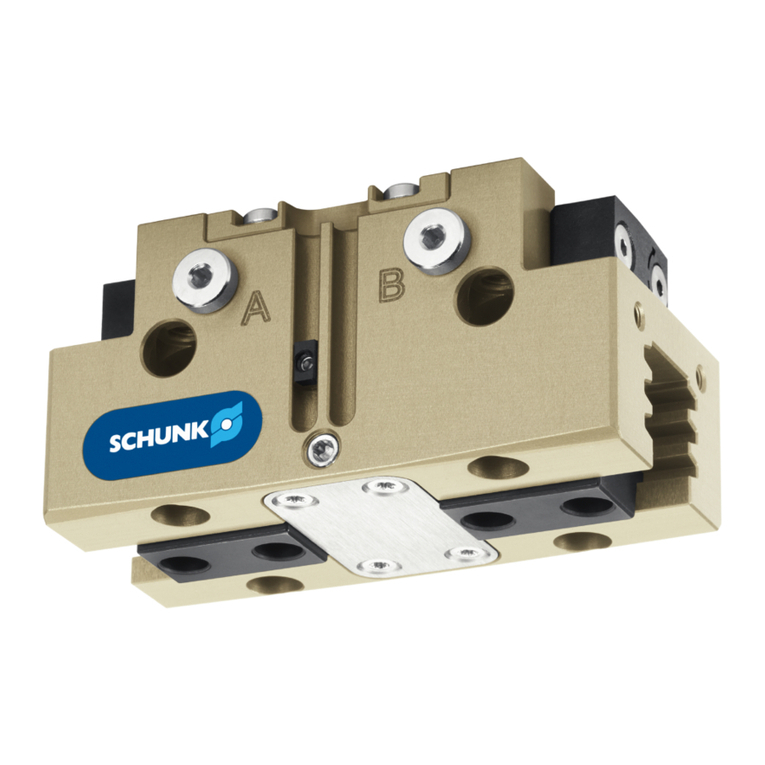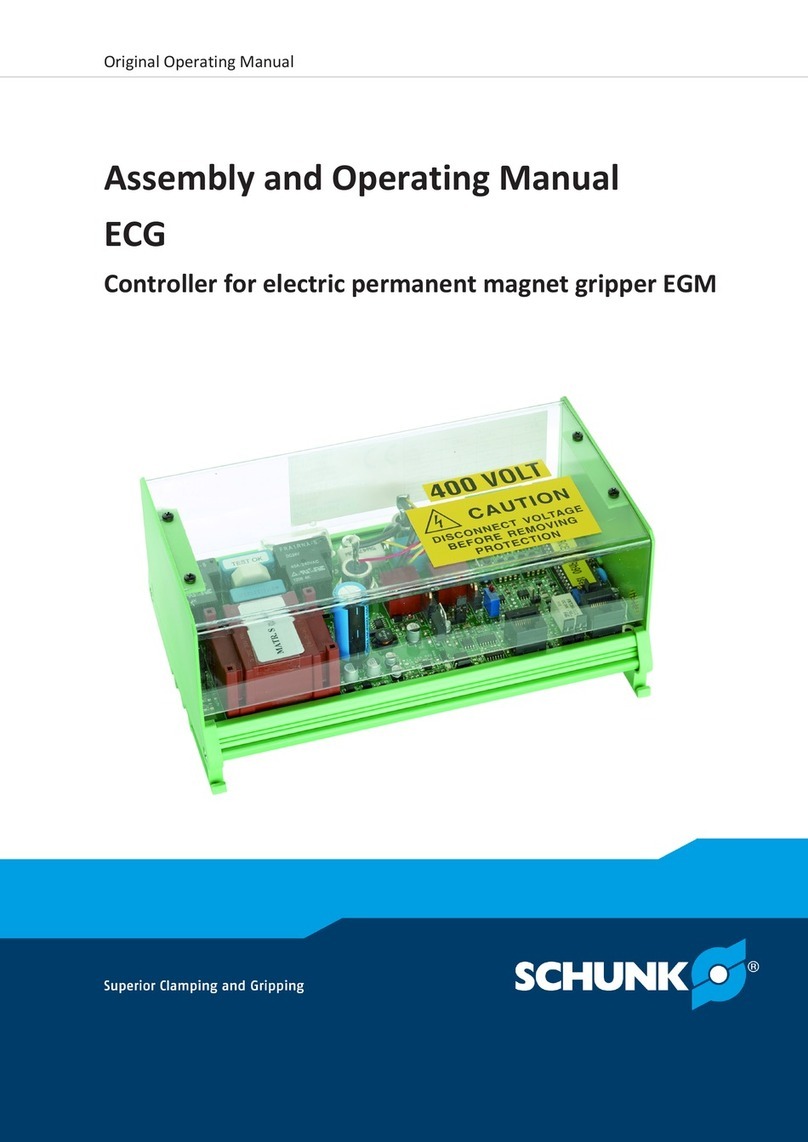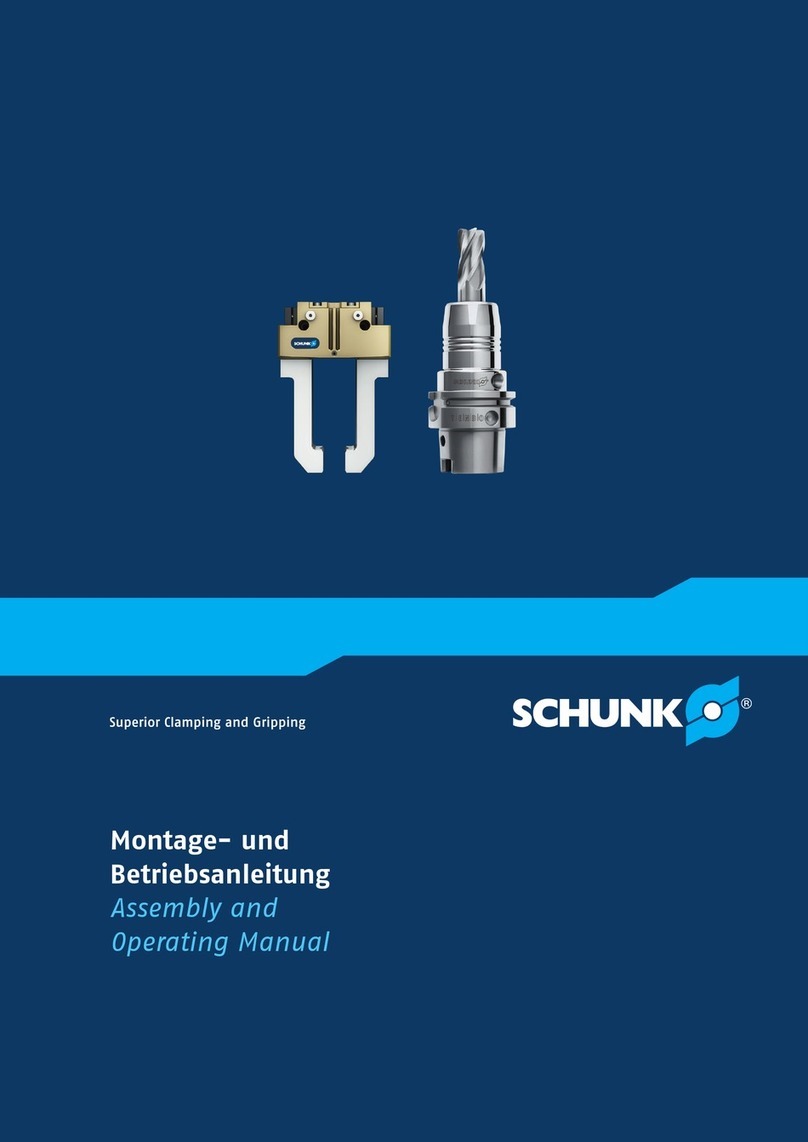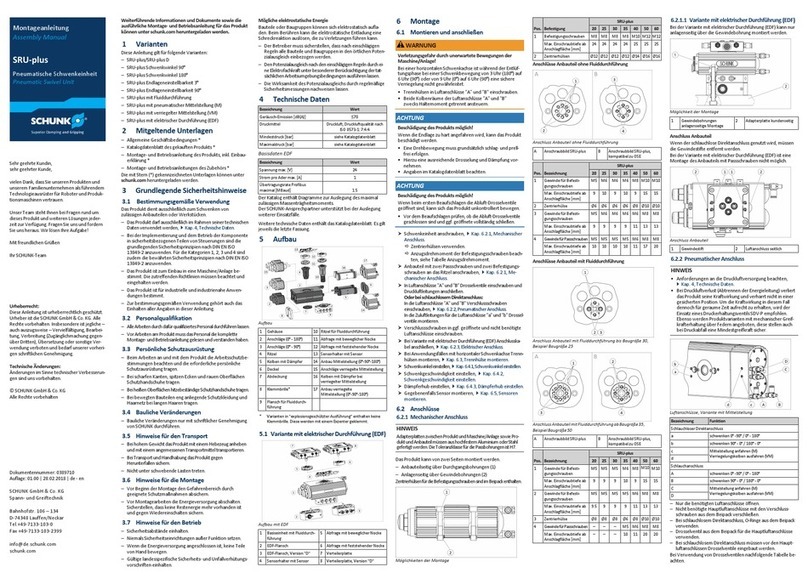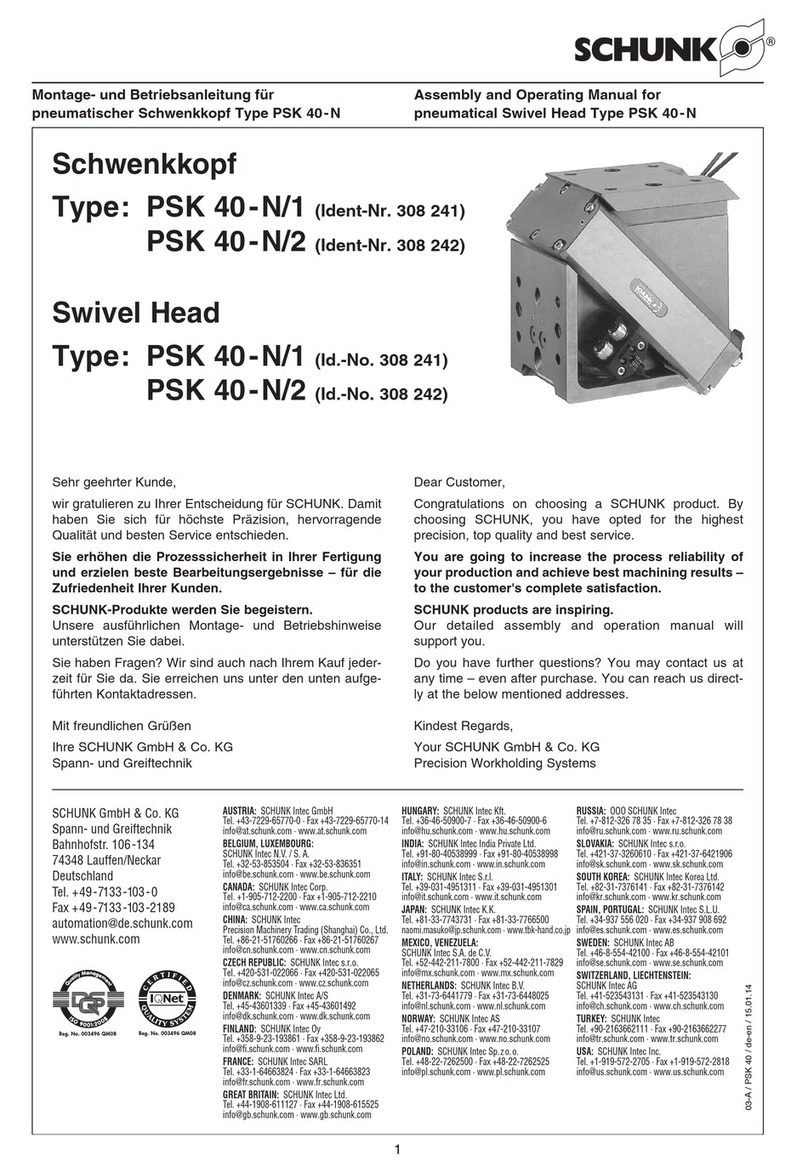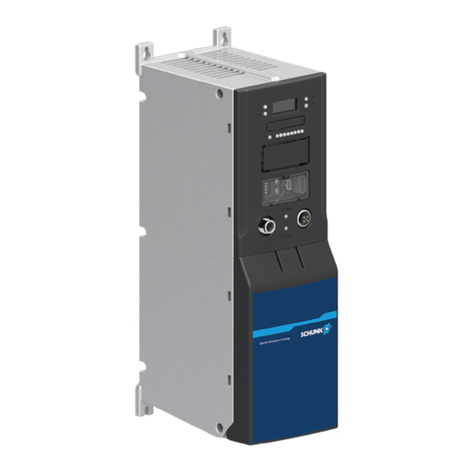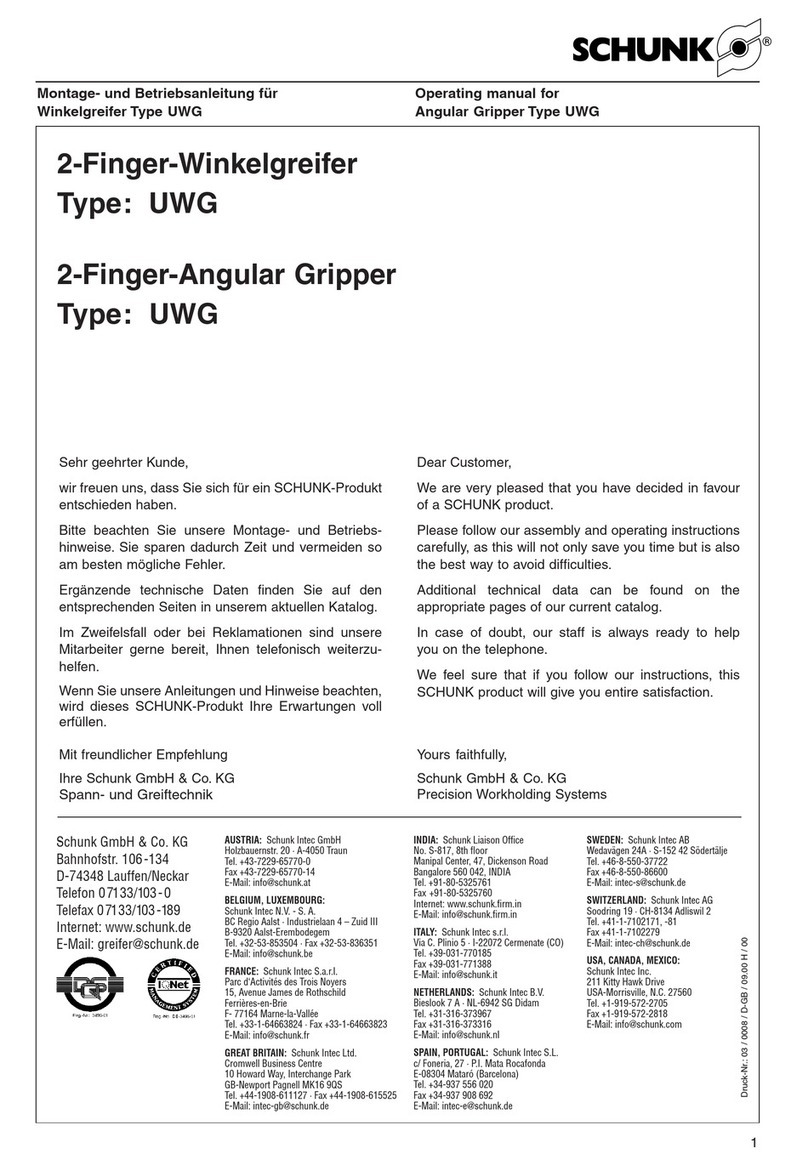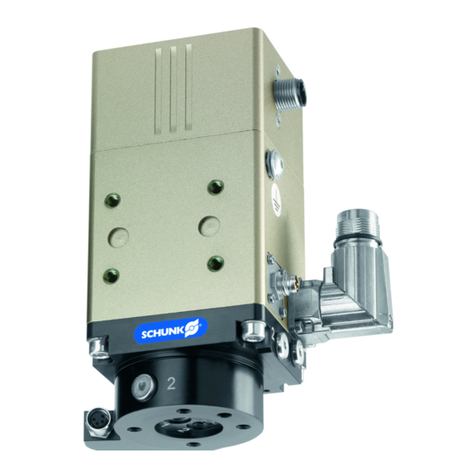
9
Gripper fingers
Requirements for the gripper fingers
Stored energy within the product creates the risk of serious injuries
and significant property damage.
• Arrange the gripper fingers in a way that the product reaches ei-
ther the position "open" or "closed" in a de-energized state.
• Only exchange the gripper fingers when no residual energy re-
mains in the product.
Ambient conditions and operating conditions
Required ambient conditions and operating conditions
Incorrect ambient and operating conditions can make the product
unsafe, leading to the risk of serious injuries, considerable material
damage and/or a significant reduction to the product's life span.
• Make sure that the product is used only in the context of its de-
fined application parameters, (3, Page 22).
• Ensure that the product is protected against sprayed water, va-
pors, contamination, and EMC influences during operation. Ex-
ceptions are products that are designed especially for contami-
nated environments.
Electromagnetic compatibility
The product meets the requirements of the EMC act of the inner-
European market, among other requirements. The product has
passed the EMC test as per the following standards:
EMC: Generic standard – Interference immunity in
industrial environments
(2011)
EMC: Generic standards - emitted interference for
living area, business and commercial areas and
The product must be installed using interference-free cables and in a
way that meets EMC requirements in order to ensure interference-
free operation.

